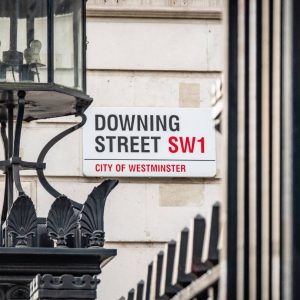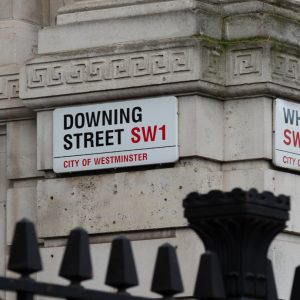
The UK’s Home Office has been slammed by MPs for spending £2bn on the Emergency Services Network (ESN) programme but not having anything to show for it. Confidence from MPs and the emergency services over whether the government department can manage ESN is also in tatters, with wider issues being raised around competition in public procurement.

In a report published by the Public Accounts Committee (PAC) – a group of cross-party MPs who scrutinise government spending – ESN has been found to carry high “long-term risks to value-for-money”. This is the fourth inquiry into the ESN programme, also known as ESNMCP, conducted by PAC.
The programme has been in the works since 2015 and attempts to create a mobile communications service for emergency services across the UK. This would cover 108 police, fire and ambulance organisations. As reported by Tech Monitor, the ESN deadline has been pushed back to 2029, with Airwave currently scheduled to be switched off in 2026.
PAC members say that a 2018 programme “reset” has not worked and that there is a concern that the Home Office cannot replace former supplier Motorola Solutions. It notes that the Home Office remains optimistic it can solve the problems relating to ESN, but says that this is “disconnected from the reality” as the department hasn’t produced a plan on how it intends to achieve its objectives. It also flags that other parts of the programme have made “less progress than expected.”
On the positive, PAC comments that the department’s new programme leadership has “won back the support of the emergency services”. This could relate to Simon Parr being appointed senior responsible owner for ESNMCP, who was a former chief constable for Cambridge.
ESN is the ‘reddest’ programme in a high-risk portfolio, says Home Office
However, the committee said it would take “at least ten years” before any savings from the programme could justify its cost. It has already cost the taxpayer £2bn, while the emergency services have incurred costs of over £200m due to delays in the project.
The committee says the Home Office has been complacent over ESN, an assertion that has been disputed by the government department. It says that it has a “better understanding” now of the challenges of ESN, but cites the network as the department’s “biggest, reddest and hardest programme” and says it would be “brave” to believe all technical solutions for it had been identified.
The Home Office has acknowledged, however, that while it could put the “best team and governance arrangements” in place, there was still considerable risk and “a lot of work to do” before the network would be ready. It also accepted that it had been “over-optimistic” about ESN in the past. This, it said, was down to an “optimism bias” within the department and the Civil Service as a whole.
Home Office doesn’t know if it can reduce ESN risks
When asked if it could reduce the risk posed by ESN, the Home Office told PAC that it wouldn’t know until another supplier could be found to replace Motorola Solutions. As reported by Tech Monitor, Motorola stepped away from ESN when the Home Office wrote to the Competition and Markets Authority (CMA) expressing concerns over Airwave’s “excessive profits” and a lack of incentive for Motorola to complete ESN. Motorola acquired Airwave in 2016 following its award of the Lot 2 User Services contract for ESN in 2015.
Dame Meg Hillier MP, chair of the committee, said: “The ESN project is a classic case of optimism bias in government. There has never been a realistic plan for ESN and no evidence that it will work as well as the current system.”
She continued that assertions from the Home Office that it will simply “crack on” with the project are “disconnected from reality” and said that the department couldn’t expect emergency services to pay for its failings.
“With £2bn already spent on ESN and little to show for it, the Home Office must not simply throw good money after bad,” she said. “A clear direction must of course be established for this long-delayed project.”
Tech Monitor has contacted the Home Office for comment.
PAC raises “wider issues” on approaches to public procurement
As part of the inquiry, the Home Office also admitted that its commercial approach to ESN was “suboptimal”. But it said it would continue persisting with it. Because of this, PAC is still concerned that the department doesn’t have the “capability” to successfully make ESN a reality.
“The software Motorola was delivering must work seamlessly with EE’s network, control rooms systems provided by an unknown number of vendors, and with devices in aircraft and vehicles as well as handsets,” the report says. “We have often seen integration cause issues in major programmes, and remain concerned that the department does not have the skills to make this work effectively.”
PAC says that the Home Office had previously tried to use contracts to make suppliers responsible for the integration or to acquire the required capabilities, but these have been found not to work.
“New risks will be created if [the Home Office] now rushes procurement or delivery as it searches for a replacement main contractor,” said Hillier. “The risks of outsourcing services must be better managed, as the government is still accountable for value for money when it does so.”
EE could end up a monopoly supplier
The PAC report has also flagged the risk that EE could become a “new monopoly supplier” due to the Home Office intending to award a new contract to the mobile network operator. This is despite EE’s work on ESN not being completed.
“While the department remains tied into a single network provider, emergency services cannot benefit from services provided by other operators,” the report says.
The Home Office says it will be able to introduce competition later as all suppliers follow the telecommunications standards. However, the committee says this approach is one of the reasons for the 2018 reset.
The National Audit Office (NAO) is currently conducting an inquiry ‘Lessons learned: competition in public procurement‘ and is planning to publish a report on its findings this summer. It says that it will use “cross-government data on public procurement” as well as examples from its past work to see how the government measures competition.
Emergency services raise concerns about the benefits of ESN
As part of its report, PAC includes feedback from the emergency services of the UK – police, fire brigade and ambulance services. The original objectives for ESN were to save money and bring mobile data to these organisations, but there are concerns that these goals won’t be met, especially as a revised business case for ESN won’t be ready until 2024.
The police services fed back to PAC that they were concerned that ESN wouldn’t provide any cheaper-than-commercial alternatives. It told the committee during the inquiry that almost all forces use mobile data via commercial tablets, laptops and smartphones and that the benefits of ESN “enhancing these with priority access to data” were not clear to them.
Representatives for the fire service told PAC that they had already realised some of the benefits ESN was originally planned to bring. It also warned that the “longer these commercial services used” the greater the risk would be that the fire services wouldn’t replace them with ESN. The ambulance services said they had to redesign systems that were expected to connect to ESN to use commercial mobile connections instead.
However, the report highlights that all three emergency services did still see a “continuing case for ESN”. The fire service said that it could enable it to share drone footage of incidents by ESN providing a common platform.
PAC says that the Independent Assurance Panel reported that “innovations and benefits would only happen after the network was completed”. It also said that it could require software and an app store. As it stands, the ESN programme “no longer expects” to provide any apps, other than to enable push-to-talk.
Read more: New HMRC IT strategy puts focus on tech platforms






